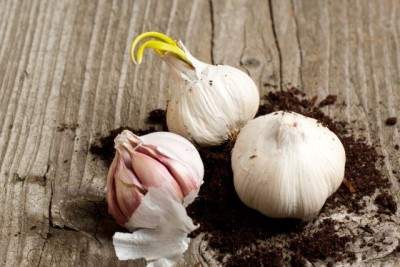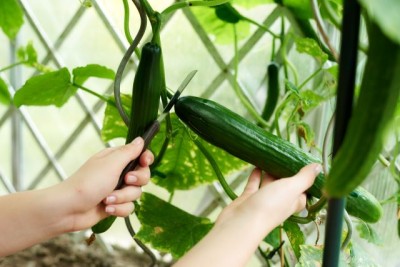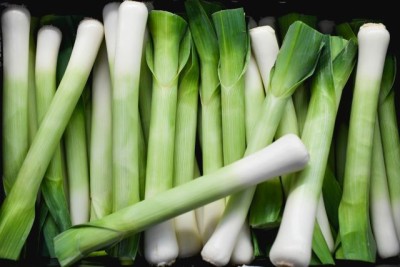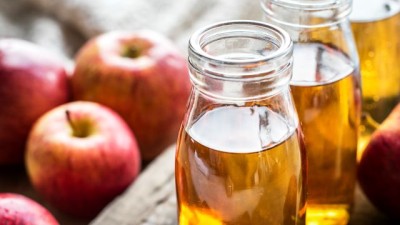How To Grow Blueberries In Your Backyard Garden
Warning: Undefined variable $post in /home/dietofli/public_html/wp-content/plugins/code-snippets/php/snippet-ops.php(584) : eval()'d code on line 3
Warning: Attempt to read property "ID" on null in /home/dietofli/public_html/wp-content/plugins/code-snippets/php/snippet-ops.php(584) : eval()'d code on line 3
The estimated reading time is 15 minutes
Warning: Undefined variable $post in /home/dietofli/public_html/wp-content/plugins/oxygen/component-framework/components/classes/code-block.class.php(115) : eval()'d code on line 3
Warning: Attempt to read property "ID" on null in /home/dietofli/public_html/wp-content/plugins/oxygen/component-framework/components/classes/code-block.class.php(115) : eval()'d code on line 3
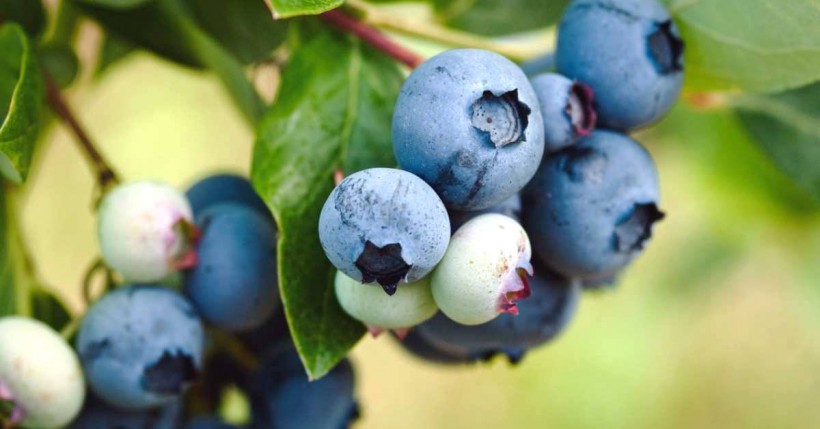
In addition to producing fruits that are super delicious and a wonderful addition to snacks, fruit salads, and desserts, blueberry bushes aren’t difficult to grow. They can be grown in pots or containers or planted directly in the ground. Moreover, offering beautiful, white spring flowers and brilliant, red fall leaves, blueberry bushes can make any landscape look more attractive.
There are several species of blueberries within the Vaccinium genus. Huckleberries, cranberries, lingonberries, and bilberries also belong to the Vaccinium genus.
Small, white spring flowers that lead to tasty, health-boosting berries, as well as oblong, pointed leaves which turn red in the fall, are what characterizes blueberry bushes.
Blueberry shrubs don’t grow fast and it can take them three to six years to provide a bountiful harvest. However, considering all the health benefits of blueberries, undeniably, it’s worth the wait.
What Do Blueberries Require?
1. Full sun.
2. Soil which:
- is acidic. The soil should ideally have a pH of 4.0-5.5
- holds moisture
- drains well
- is rich in organic matter
Types Of Blueberries
There are four primary types of blueberry: lowbush, half-high, highbush, and rabbiteye. This classification is mainly based on their size.
1. Lowbush (Vaccinium angustifolium)
These blueberry plants are sometimes referred to as wild blueberries. They withstand cold temperatures and snow cover. They grow 12 to 18 inches high and spread in a creeping fashion. They are native to southern Canada and the northeast U.S. and they grow well in zones 3 to 7.
2. Half-High Blueberry Plants
These blueberry plants are a hybrid of lowbush and highbush blueberries. The most popular varieties of half-high blueberries are ‘Northland,’ ‘Northblue,’ and ‘North Country.’ Most of them grow 18 to 48 inches in height. They are not as sweet as the other types of blueberries, but they’re a great addition to preserves, jams, and pies.
3. Highbush (Vaccinium corymbosum)
Besides being the most common type of blueberry, highbush blueberry plants also provide the most bountiful harvest. Highbush blueberries grow 72 inches high and they are grown in zones 4-7.
Highbush blueberry plants which produce big berries include ‘Darrow,’ ‘Blueray,’ ‘Berkeley,’ and ‘Coville.’ And varieties of highbush blueberries which grow well in colder climates include ‘Meader,’ ‘Herbert,’ ‘Bluecrop,’ ‘Jersey,’ and ‘Blueray.’
- Southern Highbush Blueberries
These blueberry plants are hybrids of V. darrowii, V. corymbosum, or V. virgatum. They grow 36-72 inches high and they can be grown in zones 7-10. The most popular varieties of this type of blueberry include ‘Springhigh,’ ‘Windsor,’ and ‘Emerald.’
4. Rabbiteye (Vaccinium virgatum)
These blueberries grow 180 inches high and are well suited for zones 7-9. They’re mainly grown in the southeastern U.S. This type of blueberry requires two or more cultivars, such as ‘Brightwell,’ ‘Woodard,’ and ‘Powderblue,’ to pollinate properly.
How To Plant Blueberry Plants
1. Select Plants
Two-three-year old bare-root plants are the best option when choosing blueberry plants. They’re sold in local as well as online nurseries. When buying blueberry bushes, also make sure they can withstand cold temperatures in your USDA zone.
In addition, planting two (or more) cultivars in the same area will improve pollination and yield crops of both cultivars.
2. When To Plant Blueberry Bushes
These plants are typically planted in the early to mid-spring.
3. Select A Site For Planting
Choose a sunny spot as blueberries require full sun. Additionally, make sure that the soil has good drainage and that the site is sheltered as blueberries are not tolerant of drying and harsh winds.
Do not plant strawberries close to trees which can block the sunlight or suck up any nutrients and moisture in the soil.
To keep the soil acidic and loose, you can add some peat moss into the hole where you want to plant your blueberries.
4. Prepare The Soil For Your Blueberry Bushes
Like we already said, blueberries require acidic soil, the pH value should ideally be 4.0-5.5. To check the acidity level as well as fertility of your soil, use a soil test.
You might have heard that adding oak leaves or pine needles will make the soil around the blueberry bushes more acidic, but this is not true. Even if this works, it’ll only work temporarily.
Instead of adding oak leaves or pine needles, you should add a natural soil acidifier such as sulfur to lower the pH of the soil. You can find it in pelletized or powdered form, the latter being more expensive and less safe to use.
The results from the soil test that you will receive will show the current pH level of your soil and you can see on the packaging of the sulfur how much you should pour over the soil where you plan to plant the blueberries so that the soil has an adequate pH level. However, the type of the soil is an important factor you also need to consider when planting blueberries. If you’re using sandy soil, know that this type requires less acidifier compared to clay soil.
If you can’t tell what type of soil you’re working with, you can take some soil into your hand and try to clench it in your fist. If the soil makes a solid ball, it’s silt- or clay-based soil. If it breaks apart fast, it’s sand soil.
Besides preferring acidic soil, blueberries require soil which is consistently moist, drains well, and is full of organic matter. However, while blueberries prefer plenty of organic matter, they don’t prefer plenty of nutrients, so avoid using compost. Instead, use peat moss. It isn’t high in nutrients and it breaks down slowly.
When you’ve dug the planting hole, fill a bucket with peat moss and pour it into the soil that you’ve dug up. You can mix the peat moss with the soil you’ve dug up since this soil contains the sulfur. And when you put the root ball in its place, you can fill the planting hole with the mixture of soil, sulfur, and peat moss.
Once you’ve planted your blueberries, add mulch to the soil to protect it from dry air and weed germination. Just make sure you use organic material, such as leaves, wood chips, or sawdust. The organic material is going to break down gradually and keep improving your blueberry plants and the soil.
When it comes to watering, provide your blueberry bushes with an inch of water over one-week period. To help the roots of the plant better absorb water, use drip irrigation.
5. Depth, Spacing, And Support
If you’re planting bare-root plants, dig a hole and spread the roots out into it. Then put some soil over the roots and make sure the root ball is 0.5 inches deep into the ground.
In addition, when planting blueberry bushes, make sure they are approximately 48-60 inches apart. And to provide enough space for harvesting, adjacent rows need to be 108-120 inches apart.
Blueberry bushes don’t typically require any support. However, if a plant looks weak, you can place a stake near the main stem in the ground and carefully tie the stem to the stake.
Blueberry Plant Care
Soil
Make sure the soil is acidic, holds moisture, drains well and is rich in organic matter. Before planting your blueberries, check the acidity of the soil by using soil test. If you need to reduce the pH of the soil, use garden sulfur. Lowering the pH also helps prevent blueberry leaves from turning yellow.
Light
To grow properly and provide bountiful harvest, blueberry bushes require full, direct sunlight. This means that they need 6-8 hours of direct sunlight a day.
Humidity And Temperature
The highbush blueberry plants require humid air and they can withstand a cold climate, whereas those varieties that are bred for Southern gardens can’t withstand very cold temperatures. However, the majority of types of blueberry needs to be protected from harsh, drying winds.
Pruning
When planting your blueberry bushes, make sure you prune them so as to get rid of any broken or dead branches. Then, after the first year, you can continue pruning the bushes once a year in the early spring. However, make sure you don’t prune aggressively since this may decrease yield.
Pruning is required because it helps:
- Remove broken or dead branches
- Remove items that don’t produce new, strong wood anymore
- Prevent main stems from overbearing
- Shape the blueberry bush
- Encourage new shoot growth
Water
Deepwater your blueberry bushes at least once a week. To ensure the soil is consistently moist, you can use drip irrigation.
Nutrient Maintenance
Blueberry bushes may not like soil packed with nutrients, but they do prefer a small amount of nitrogen. You can apply cottonseed meal, alfalfa meal, or soybean meal once every year as these are a good sources of nitrogen.
Fertilizer
Blueberries don’t need to be fertilized during the first year. You can start fertilizing them when the flower buds open and when berries start forming. Additionally, make sure you remove any weeds in order to prevent them from competing for nutrients and water.
Ammonium sulfate is the most commonly used fertilizer. Other fertilizers include manure tea and fish emulsion. Whatever fertilizer you choose to use, make sure it’s suitable for plants growing in acidic soil. You can fertilize the soil or apply the fertilizer to the leaves.
Pollination
Although blueberries have the ability to self-pollinate, it’s best to plant two or more varieties that bloom at the same time. This will lead to larger fruits and increased yield.
Harvesting Blueberries
Blueberries are ready to be harvested when they’re entirely blue and taste sweet, which is typically between June and August. Most blueberry bushes begin producing harvest after three years, but they don’t produce bountiful harvest until around their sixth year.
Harvesting ripe blueberries is very easy. You can only hold a bucket under blueberry clusters and pick the blueberries off and they’ll readily fall into the bucket. Store the blueberries in the refrigerator immediately. You can wash them afterwards before eating them. You can eat them fresh or add them to baked goods. You can keep them in the freezer for about 6 months to a year.
How To Grow Blueberries From Seed
To grow blueberries from seed, you first need to put blueberries in the freezer for three months. In warm climates, the best time to plant blueberry seeds is in the fall, whereas the best time to plant them in cool climates is spring.
To plant blueberry seeds put moistened sphagnum moss on a tray, place the seeds on the moss, and put some more moss over them. Wrap the tray using newspaper and keep it in a room which stays 15- 21 degrees Celsius. Make sure the moss is consistently moist.
First seedlings usually take around a month to start appearing, and when they do, you can uncover the tray and place it somewhere where it’ll be exposed to bright, indirect light. When the seedlings grow 5-8 centimetres tall, you can plant them in an equal mix of soil, sand, and peat moss. Just make sure they stay consistently moist. You can plant them into the ground in their second year in the spring.
How To Grow Blueberries In Containers
Although growing blueberries in containers require patience, it’s not difficult at all and it’s definitely effective.
To plant blueberries in a container, choose a big, weather-proof container that has good drainage. Mature blueberries need to be planted in a container which is 61 centimeters deep and around 61-72 centimeters wide. If you intend to plant smaller shrubs, you can use smaller containers and use larger ones as they grow.
- As a planting medium, use a 50-50 mix of peat moss and soil. Keep it consistently moist prior to putting it in the container.
- Put the blueberry into the medium and water it well.
- Keep the containers somewhere where they’ll receive full sun.
- Fertilize the blueberries in early spring with fertilizers that are suitable for acidic soil.
- Keep the soil consistently moist.
- As soon as you notice that the berries start to ripen, cover the bushes with floating row cover.
- During the winter, keep the containers in a sheltered spot where they’ll be protected from drying winds.
- Blueberry bushes take around 5-6 years to begin producing berries. Yield can be increased if you plant another variety in another container provided that both varieties bloom at the same time.
How To Grow Blueberries In A Pot
Growing blueberries in a pot are ideal if you don’t have adequate soil in the garden for this fruit.
When growing blueberries in a pot, the pot needs to have drainage holes on the bottom and it needs to be at least 46 centimeters deep. It’s recommended that you use an unglazed clay pot as it’ll let excess moisture from the soil escape through its walls. You should also choose a type of blueberry that doesn’t grow big.
Choose a potting mix and fertilizers which are suitable for plants that prefer acidic soil. Use separate containers when planting your blueberries and plant them at the same depth that they were planted in the nursery pots.
Place the pot in a position where it’ll be exposed to plenty of sunlight and keep the soil moist, but do not allow it to become soggy.
Common Pests And Plant Diseases
Blueberries are usually resistant to pests, but keeping your blueberries protected from birds can be a little bit tough. If you have just a couple of bushes, using a scarecrow or putting bird netting over the bushes will help keep birds at bay. However, if you have a lot of blueberry bushes, you might need to use a bird deterrent.
Cranberry fruit worm, blueberry tip borer, blueberry maggot, plum curculio, scale, spotted wing drosophila, and cherry fruit worm are the most common insects that you should try to keep your blueberries protected from. You can put orb trap among the bushes to trap pests.
Rust and powdery mildew are two diseases that commonly affect blueberries. The best way to protect your blueberries from such diseases is to plant varieties that are genetically resistant. Providing your blueberry bushes with adequate air circulation, keeping them exposed to bright, direct sunlight, replacing the mulch once a year as well as removing any broken or dead branches and fallen debris also helps protect your plants from fungal diseases.
Other diseases that can affect blueberries include:
- Canker
This disease starts by affecting the lower parts of the canes. It is manifested as small red spots that will grow larger. If this disease is left untreated, the spots will girdle the cane over time and cause it to die.
- Anthracnose
Anthracnose is a fungal disease that manifests as bright pink spores on the berries when they’re developing and it thrives in damp weather.
- Mummy Berry
This disease is caused by a fungus. You can tell your blueberry bushes are affected by this disease if the flower clusters begin to turn black. The spores can infect all the blossoms. And when this happens, the fruit on the bush turns black and hard, as if it has been mummified.
To prevent the disease from spreading, remove as many of the affected berries as you possibly can.
- Botrytis
This disease spreads quickly in damp weather and it causes the blueberries to shrivel and rot.
- Twig Blight
The first symptoms of this disease can be similar to those of canker. Twig blight can progress and cause spots to appear on the leaves and it can also affect smaller branches, twigs, and the crown.
Conclusion
Blueberries can be planted directly into the ground or they can be grown in containers and pots.
Blueberry shrubs take 3-6 years to provide a bountiful harvest.
To grow well and produce fruit, blueberries require:
- Bright, direct sunlight
- Soil, which is acidic, holds moisture, drains well, and is packed with organic matter.
- Lowbush, half-high, highbush, and rabbiteye are the four primary types of blueberries.
To plant blueberry plants you need to follow these steps:
- Select bare-root blueberry plants which are two-three years old.
- Plant your blueberries in the early to mid-spring.
- Select a planting site. Blueberries grow best in sunny spots and in soil that has good drainage.
- Prepare the soil for your blueberries. Blueberries require acidic soil and they don’t prefer a lot of nutrients. Use sulfur to adjust the pH level of the soil.
- Dig a planting hole.
- Mix peat moss with the soil you’ve dug up and once you put the root ball in its place, cover it with the mixture.
- Add mulch consisting of organic material to the soil where you’ve planted your blueberries.
- Use drip irrigation to keep the roots of the plants evenly moist.
- Make sure you prune your blueberry bushes.
- Blueberries can self-pollinate. But, it’s best to plant two or more varieties that bloom at the same time.
- You can harvest your blueberries between June and August.
- In addition to birds, pests, such as cherry fruit worm, blueberry maggot, blueberry tip borer, and scale, can also damage blueberries.
- The most common diseases that can affect blueberry plants include powdery mildew, rust, canker, anthracnose, mummy berry, botrytis, and twig blight.

